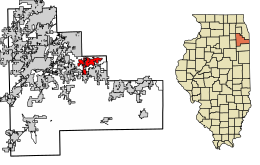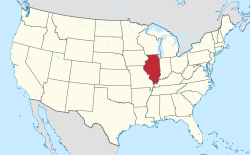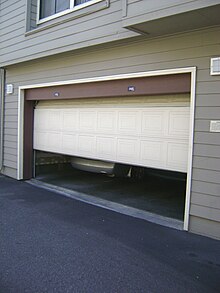What Kind of Garage Door Opener and Door Do You Have? .
If garage doors suddenly stop working, it's a frustrating and inconvenient experience.Whether you are rushing out to work, or trying to pull your car to the garage during a rainstorm an unresponsive door is the last thing you'd like to have to deal with.The first step in addressing the issue is to determine the type of opener and garage door that you are using, as this will drastically affect your strategy for diagnosing and fixing.
Roll-up garage doors, often used in commercial environments comprise slats which are rolled up into a coil.
Doors that tilt up, on the contrary are a single piece that can be tilted out and up as it opens.Equally important is identifying the type of garage door opener.The three primary types are belt-drive, chain-drive and screw-drive openers.Chain-drive openers, which use the use of a chain made of steel to lift and lower the door, are strong and economical but can be noisy.Belt-drive openers work similarly, however they use a belt made of rubber which makes them quieter and ideal for attached garages.Screw-drive openers operate by means of a threaded steel rod, offering a balance between costs and noise.
The next thing to do is to examine your garage door opener, and identify the model. Check the breaker and plug to ensure that the opener is running. Inspect the release cord for manual operation to be sure it's not been pulled. This could result in the door being disconnected from the opener. Review the tracks and rollers of the door to determine if there are any damage or obstructions. Clean up any obstructions.
If you need to, grease the moving parts. Insufficient lubrication could result in them becoming stuck or become stuck.If your door continues to not function, try resetting the opener.This can often resolve electronic malfunctions or faults.Consult your opener's manual for specific reset instructions as this process can vary between models.Many modern openers feature a reset button, while others may require unplugging them and plugging back in.
In certain instances the problem could be more complex, such as a broken spring or a worn-out motor, which would require professional assistance.Springs are under significant tension and can be dangerous to repair without the proper tools and experience.
When the garage door stops functioning, you should consult with an expert.
Be sure to look for obstructions or debris.
If your garage door suddenly ceases working, it's extremely frustrating and confusing particularly if it's part of your routine.
This easy, yet effective method can be used to pinpoint the issue and bring back functionality to your garage.Even a small obstruction could stop your garage door from working properly.
Begin by examining the tracks both on the right and left sides of the door. Look for obvious obstructions, or debris buildup. If you find anything strange, like a twig, or a rock that is stuck within the track. Get it removed with care.
The issue may not always be obvious. To check whether the issue is there, you can run your hands across the track. Also, make sure that the tracks are aligned. Misalignment can result in the door jam.Check the rollers and hinges. These parts must be able to move without a thump. If they are stuck or sticky, this could be due to rust or a build-up of grime. Lubricating and cleaning these parts can usually resolve the problem.
It's also crucial to examine the area surrounding the door itself.Sometimes things stored in the garage can accidentally move or fall, blocking the way of the door.Ensure that the area is cleared and that nothing is blocking the door's movement.
If, even after clearing any apparent obstructions, the door continues to refuse to open check the sensors.
What is the most important thing to do when your Garage Door Stops Working? - curve
- ITT Technical Institute
- length
- terrace house
In conclusion, when faced with garage doors that suddenly isn't functioning, checking for obstructions or debris is an logical and frequently effective first step.It takes only a few tools and knowledge, but it could save you time, money, as well as the inconvenience of contacting a professional for the most straightforward fix.By making sure that the path is clear and
Inspect the Remote Control and Wall Switch
What is the most important thing to do when your Garage Door Stops Working? - 2020 United States Census
- steel
- 2020 United States Census
- curve
When your garage door suddenly stops working or is not working, it's an unexpected inconvenience that disrupts your daily routine.In these situations it's normal to experience that you must fix the problem quickly.One of the first and most efficient steps you should consider is to check the remote control as well as the wall switch.
These parts are usually the cause of a non-responsive garage door and performing a thorough check could save you time and potentially avoid unnecessary costs.First, consider the remote control.This handheld device is your primary tool for operating the garage door without direct physical interaction.Over time, remote controls can experience issues such as drained batteries, signal interference, or even internal damage.Start by replacing the batteries with new ones.It might seem simple, but dead batteries are a common reason for a garage door not responding.If the problem persists after replacing the batteries, try reprogramming the remote according to the manufacturer's instructions.Additionally, ensure that the remote is within the recommended range and that there are no obstructions blocking the signal.
The wall switch is a critical component of the garage door system.
If you feel at ease you are comfortable, then open the switch to check for any damaged or broken wires.The remote control or wall switch is working however the door still not responding. This could be a sign of problems with the garage opener unit or with other components like sensors or door tracks.
You can resolve these issues prior to moving on to more complex troubleshooting.The final step is to examine the wall switch and remote control whenever your garage door stops working is a simple and practical approach.By inspecting these parts first, you will be able to quickly identify if the issue is within these components or if further examination is needed.This initial inspection is not just time-saving but also gives you assurance that you've taken the necessary steps to diagnose the issue correctly.
Manually test the door balance
When your garage door suddenly stops working and then it stops working, it can be frustrating and inconvenient.The garage door is an essential component of your home, providing security, shielding from the elements, and ease of access to your car and storage area.
Manually testing the balance of the garage door is the most important thing to do in the event that your door is not functioning properly. This easy but efficient technique will allow you to identify any possible issues and avoid any further damage.The balance of a garage door is essential to the proper functioning.A properly balanced door means that the opener does not need to work harder than is necessary, which reduces the possibility of wear and tear on the motor as well as other parts.An unbalanced door, contrary to what you might think, can lead to more important issues over time, such as misalignment, broken springs, or complete system failure.Therefore conducting a test of the door's balance is an essential check that will aid in determining if there is a problem with the door itself or the opener mechanism.
Start by disengaging the garage door opener.
Most garage doors are equipped with a release device that is found on the handle or red cord. When the door has been unplugged from the motor, you can lift the door to waist height and then let it go. A well-balanced door will remain in place and move in a gradual manner.It is best to contact a professional to help you adjust the springs in order to ensure that the garage door is in a balanced state. This won't only fix the issue, but also increase the longevity and durability of your garage door.
In conclusion, manually testing the door's balance is a crucial first step if your garage door stops working suddenly.
When you take action quickly and comprehending the importance, you can ensure that your garage door will run efficiently and safely in the future.Tracks and Rollers
When confronted with a garage door that is suddenly refusing to work, your first instinct is to worry or consider the most difficult technical issues.However, often the solution is a simple check of the tracks and rollers.This fundamental check can save you time and potentially costly repairs which is why it's the first thing you should prioritize when your garage door stops working.
The tracks and the rollers of the garage's operating system are essential. The tracks are the steel rails that guide the door when it opens. The rollers are the ones that move across the tracks.
As time passes, these components could become dirty, misaligned or worn-out, resulting in problems with operation.Begin by examining the tracks for obstructions.Dust dirt, grime, and even tiny particles can collect within the tracks, which causes the rollers to struggle when they travel along the path.Cleaning the tracks using a damp sponge can usually resolve these issues.Make sure to dry them thoroughly afterward in order to avoid rust.
After that, you should check the alignment of the tracks.Tracks must be straight and parallel to other.If they look bent or not in alignment, the door will jam.You can gently tap the misaligned sections back into position using the help of a rubber mallet.However, if there is a significant amount of damage, it is advisable to contact a professional to re-align the tracks in a way that is safe and function.
The wear and tear of rollers can occur in time. This is especially the case if they're made of plastic.
Metal rollers with bearings last longer and allow for more smooth operation.Additionally, lubrication plays a essential role in maintaining the seamless movement of tracks and rollers.Applying an lubricant based on silicone can reduce friction and prevent wear.Make sure that you grease all moving parts, including the hinges and springs, to make sure that your garage door functions effectively.
In conclusion, checking the rollers and tracks is an ideal first step if your garage door suddenly isn't working.It's simple procedure that can often identify and resolve the most common issues.By making sure these components are clean, aligned and properly lubricated, you will often restore your garage door fully functional without having to make costly repairs.
The time taken to inspect and maintain the parts will help avoid future malfunctions, prolonging the lifespan of the garage door system.Check for visible damage or wear
It's frustrating and annoying when the garage door stops functioning suddenly, particularly if you're heading home or trying to secure the home to sleep.
Garage doors are complex systems that comprise rollers, springs, tracks, cables and other components. With time, the components of the system may get worn out from frequent use and exposure.
When you conduct a thorough inspection, you can identify any obvious indications of damage that may be cause for the door to fail.Start by inspecting the springs. They are the ones responsible for lifting and lowering the door. Examine for indications of wear or rust. A worn or broken out spring can make the door inoperable, therefore it's important to fix this issue immediately. Next, check the cables for signs of fraying and broken cables.
Another aspect to be focused on is the door itself.Look for any visible bents, dents, or warping that may affect its balance or alignment.Pay careful attention to the weather stripping on the top of the door because a damaged strip may prevent the door from sealing correctly.
Ensure that the sensors at the door are cleaned and in good alignment.What is the most important thing to do when your Garage Door Stops Working? - steel
- talk show
- pricing
- Cairo
A visual inspection is beneficial however, it's crucial to be aware that not every issue is immediately apparent. If you don't find any obvious signs of wear or damage you might need to speak with a professional to determine the issue.
In summary, when faced with a non-operational garage door, checking for visible damage or wear is a crucial first step.This approach not only helps in identifying the problem quickly but also empowers you to make the appropriate action in order to return the door to its original condition.
By being attentive and proactive, you can ensure the longevity and durability of your garage doorExamine the Springs and Cables
It's a hassle when your garage door stops working. It is important to check the springs and cables. These are crucial for the functioning of your garage, and are the most significant reason of a garage door that is not functioning properly.
The springs play an essential role in the performance and ease of your garage by helping to balance the load. There are two major types of springs, torsion and extension. Torsion springs mount above the garage and twist in order to store energy. Extension springs, on the other hand are installed on to either side of the door and can stretch to give the necessary force.
Over time the springs be damaged, worn out, or lose tension, which can lead to operational issues.The cables can also be damaged through wear and tear. They may fray or snap when pressure is applied.
If you are evaluating the springs or cables, start by visually looking at them.Look for signs of wear, rust or fraying.If you find a damaged spring or cable It is important to refrain from opening the door until the problem is fixed, as pushing it might cause further damage, or cause an accident.If springs appear to be intact however the door is not functioning, it might be because they've lost tension and require adjustment.
It's essential to consider safety when dealing with garage door components.
Springs and cables are under high tension and can cause serious injuries if mishandled.If you're unfamiliar with garage repair, it's best to consult a professional technician.They have the tools and expertise to repair or replace these parts, ensuring your garage door functions correctly and securely.In conclusion, when your garage door suddenly stops working, assessing the springs and cables is a key step in diagnosing the problem.Understanding their role and potential issues can help you determine whether a simple adjustment is needed or if professional intervention is required.Taking prompt action not only restores functionality but also ensures the safety and longevity of your garage door system.
It is recommended to call a professional Technician
If your garage door suddenly stops functioning and it is not working, it could disrupt your day and even pose an security threat to your home.
It is tempting to pick up tools to attempt a fix by yourself however, it is recommended to call an expert. This won't only ensure your safety, but also give you a long-lasting and more effective solution.Garage doors are complex systems composed of various components such as springs, cables, tracks, and electronic parts.Each of these elements plays a crucial role in the door's operation, and a malfunction in any part can cause the entire system to fail.Without proper knowledge and experience, attempting to fix these issues can be dangerous.For instance, garage door springs are under high tension and can cause severe injury if handled improperly.Professional technicians are trained to deal with these risks safely, using the right tools and techniques to handle repairs.
In addition, a technician who is a professional has experience and expertise that a layperson simply does not possess.
They can quickly diagnose the issue and identify whether it's a minor problem, like a misaligned track, or something more serious, like a broken spring.This expertise not only saves you time but also prevents the potential for further damage that can occur with incorrect handling.Professionals also have access to high-quality parts and can ensure that replacements match the specifications of your existing garage door system, leading to better functionality and longevity.A skilled technician can save money in the long term. While an DIY option may appear cheaper at first, it can result in expensive and costly repairs later on.
Many technicians also provide warranties on their work, giving you peace of mind knowing that in case something goes wrong, you are covered.In the end, contacting a professional could save you a lot of time and hassle.Trying to learn the intricacies of garage door mechanics and purchase the right tools, and carry out an repair can take hours or days.In contrast, a professional can usually resolve the issue quickly, and allow you to resume your daily routine without delay.
The desire to repair the garage door on your own is powerful. However, calling a professional is the best, safest and most efficient option. Their knowledge, their access to quality replacement parts, and their capability to perform quick and precise repairs ensure that your garage is working well and safeguarding your home.


















